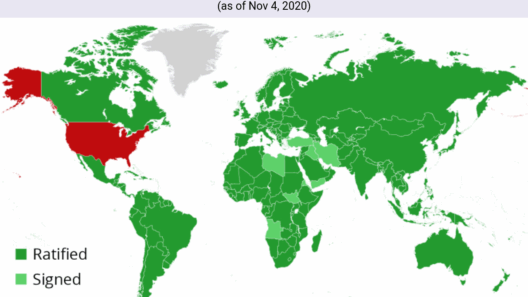Africa, the second-largest continent, is a tapestry woven from diverse climates, each contributing to the intricate ecology that defines the region. Stretching from the arid expanses of the Sahara Desert to the lush, verdant rainforests of the Congo Basin, Africa’s climate exhibits both stark contrasts and remarkable adaptations. Understanding these climatic variations is crucial for appreciating the continent’s rich biodiversity, agricultural practices, and the impacts of climate change.
The Sahara Desert, perhaps the most iconic representation of Africa’s climate, spans approximately 9.2 million square kilometers, making it the largest hot desert on the planet. Characterized by extreme aridity, the Sahara experiences minimal precipitation, averaging merely 25 millimeters per year. Temperatures can soar to 50 degrees Celsius (122 degrees Fahrenheit) during the day, while nights can plummet to freezing temperatures. This diurnal temperature variation is a defining feature of desert climates, illustrating the harsh conditions that species must endure.
Despite its arid nature, the Sahara supports a surprising array of life. Adaptations among flora and fauna are remarkable; for example, the date palm and various cacti have evolved to conserve water. Animals like the fennec fox and desert lizards thrive in this environment, showcasing unique physiological traits that allow them to escape the intense heat. Microhabitats, such as oases, serve as critical refuges, providing sustenance for both animals and humans alike, while also contributing to the desert’s occasional bursts of biodiversity.
Transitioning from the dry expanses of the Sahara, one encounters the Sahel, a semi-arid region that serves as a transitional zone between the desert and the more humid climates of West and Central Africa. The Sahel is characterized by a short rainy season, typically lasting only a few months, resulting in herbaceous cover rather than lush vegetation. Its climate is increasingly vulnerable due to climate change, affecting local agriculture and exacerbating environmental stressors. The encroachment of desertification poses significant challenges for the communities relying on subsistence farming.
As one moves southward, the climate morphs into savannah, distinguished by its iconic grasslands interspersed with trees. The West African savannah, for example, hosts a wet and dry season calendar, which yields extensive biodiversity. This region sustains distinct wildlife, including elephants, meerkats, and an array of birds, each uniquely adapted to the seasonal rhythms of the landscape. The interplay of rain and dry spells creates a dynamic ecosystem, where grasslands flourish during wet months, only to face dormancy as drought conditions prevail.
The Central African region further diversifies Africa’s climatic landscape. Entering the lush humid tropics, the Congo Basin presents a stark contrast to the drier regions encountered earlier. With some of the highest rainfall totals—ranging from 1,200 to over 2,500 millimeters annually—this area witnesses a thriving rainforest ecosystem. Towering trees, some exceeding 60 meters in height, dominate the landscape, creating a complex habitat teeming with life. This biome supports unique wildlife, including gorillas, bonobos, and a plethora of plant species, many of which are endemic to the region.
The interplay of temperature, humidity, and precipitation in the tropical rainforest leads to high levels of biodiversity and various ecological processes such as photosynthesis and decomposition operating at accelerated rates. The forest’s canopy system creates microclimates, allowing for diverse habitats. However, human activities, including deforestation and mining, threaten this delicate balance and contribute to climate change, making conservation efforts indispensable.
Along the eastern side of the continent, the Great Rift Valley includes regions experiencing further climatic diversity. From temperate highlands to arid zones, this area encompasses an array of climates. The Ethiopian Highlands, for instance, provide a cooler climate characterized by seasonal rainfall conducive to agriculture, while the nearby lowlands reflect drier conditions. Such volatility complicates both ecosystems and agricultural practices, making adaptability essential for communities dependent on these lands.
Moreover, Africa’s coastal regions, particularly along the Mediterranean in the north and the Indian Ocean in the east, experience maritime influences that significantly shape their climates. The Mediterranean climate features hot, dry summers and mild, wet winters, supporting both agriculture and unique flora, such as olive trees and citrus. Meanwhile, the eastern coast encounters trade winds and monsoonal patterns, influencing rainfall distributions across countries like Kenya and Tanzania. These coastal climates play an important role in not just agriculture but also fishing industries, integral to the livelihoods of millions.
Despite the remarkable climatic diversity, Africa is increasingly facing the grave realities of climate change. Rising temperatures, shifting precipitation patterns, and increased frequency of extreme weather events significantly threaten ecosystems and human populations alike. Desertification in the Sahel, flooding in coastal areas, and deforestation in tropical regions are urgent issues that demand a concerted effort in climate conservation and mitigation strategies.
In conclusion, Africa’s climate weaves an intricate mosaic from the parched sands of the Sahara to the lush canopies of the Congo. Understanding these variations fosters a deeper appreciation for the continent’s rich biodiversity, the resilience of its ecosystems, and the pressing challenges posed by human-induced climate change. In addressing and adapting to these changes, Africa stands at the crossroads of opportunity and vulnerability, requiring global attention and collaborative action to forge a sustainable future for its environment and its people.






